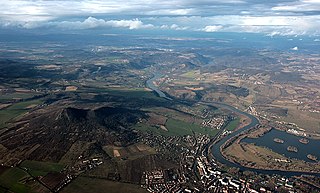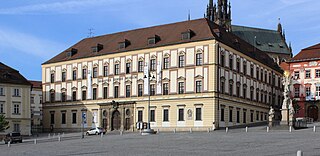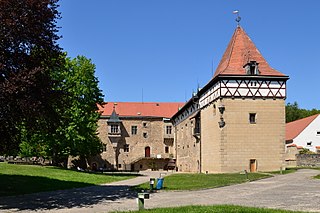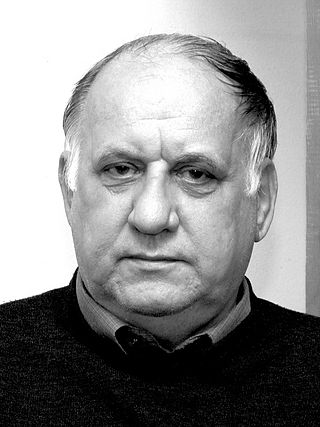This is a list of museums in the Czech Republic , sorted by regions.
Contents
- Central Bohemian
- Hradec Králové
- Karlovy Vary
- Liberec
- Moravian–Silesian
- Olomouc
- Pardubice
- Plzeň
- Prague
- South Bohemian
- South Moravian
- Ústí nad Labem
- Vysočina
- Zlín
- See also
This is a list of museums in the Czech Republic , sorted by regions.

Pardubice Region is an administrative unit of the Czech Republic, located mainly in the eastern part of its historical region of Bohemia, with a small part in northwestern Moravia. It is named after its capital Pardubice. As an administrative unit, Pardubice Region has existed three times in the course of history. It was established for the first time in 1850, and extended from Český Brod to the Bohemian-Moravian border. In its second existence, it was one of 19 regions as they were set between 1949 and 1960. After 1960, Pardubice became the capital of Pardubice district, which was part of the Eastern Bohemian Region. The Pardubice Region, as it is now, was reestablished in 2000.

Ústí nad Labem Region or Ústecký Region, also known as Aussiger Region, is an administrative unit of the Czech Republic, located in the north-western part of the historical land of Bohemia, and named after the capital, Ústí nad Labem. It covers the majority of the former North Bohemia province and is part of the broader area of North Bohemia.

Hluboká nad Vltavou is a town in České Budějovice District in the South Bohemian Region of the Czech Republic. It has about 5,400 inhabitants. The town is known for the Hluboká Castle.

Moravské zemské muzeum is a museum in Brno in the Czech Republic. It is the second-largest and second-oldest museum in the country. Its collections include several million objects from many fields of science and culture.

Lysá nad Labem is a town in Nymburk District in the Central Bohemian Region of the Czech Republic. It has about 9,700 inhabitants. It is situated on the Elbe river. The town centre is well preserved and is protected by law as an urban monument zone.

Sokolov is a town in the Karlovy Vary Region of the Czech Republic. It has about 22,000 inhabitants.

Kopřivnice is a town in the Moravian-Silesian Region of the Czech Republic. It has about 21,000 inhabitants. It is an industrial town, known especially for the vehicle manufacturer Tatra.

Přerov nad Labem is a municipality and village in Nymburk District in the Central Bohemian Region of the Czech Republic. It has about 1,200 inhabitants.

Valašské Meziříčí is a town in Vsetín District in the Zlín Region of the Czech Republic. It has about 22,000 inhabitants. The historic town centre is well preserved and is protected by law as an urban monument zone.

Zlonice is a market town in Kladno District in the Central Bohemian Region of the Czech Republic. It has about 2,300 inhabitants.

Český Krumlov District is a district in the South Bohemian Region of the Czech Republic. Its capital is the town of Prachatice.

Budyně nad Ohří is a town in Litoměřice District in the Ústí nad Labem Region of the Czech Republic. It has about 2,100 inhabitants. It lies on the Ohře river. The town centre is well preserved and is protected by law as an urban monument zone.

Český Dub is a town in Liberec District in the Liberec Region of the Czech Republic. It has about 2,800 inhabitants. The historic town centre is well preserved and is protected by law as an urban monument zone.

Muzeum Těšínska is a regional museum in Český Těšín, Czech Republic. It focuses on the history and traditions of the region of Cieszyn Silesia. The museum was founded in 1948 by teacher Ladislav Báča.

Karel Kuklík was a Czech photographer and one of the representatives of Informel in Czech fine art photography. He was classified as an artist influenced by abstract and surrealist tendencies and as an artist who creates works with a strong existentialist atmosphere. In 2000 he co-founded the photographic group Český dřevák.

Český dřevák was a group of Czech photographers in 2000–2008. Its members were not connected by a common manifesto, but by the technical way of creating photographs. All of them worked with wooden large-format cameras and their resulting photographs were usually contact prints.
The cultural monuments of the Czech Republic are protected properties designated by the Ministry of Culture of the Czech Republic. Cultural monuments that constitute the most important part of the Czech cultural heritage may be declared national cultural monuments by a regulation of the Government of the Czech Republic. Government may also proclaim a territory, whose character and environment is determined by a group of immovable cultural monuments or archaeological finds, as a whole, as a monument reservation. Ministry of Culture may proclaim a territory of a settlement with a smaller number of cultural monuments, historical environment or part of a landscape area that display significant cultural values as a monument zone.